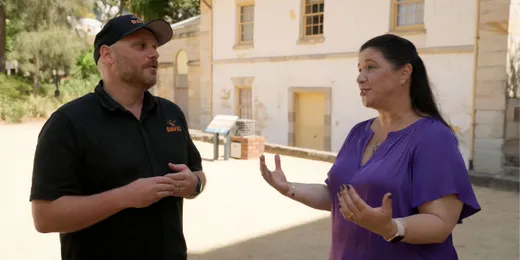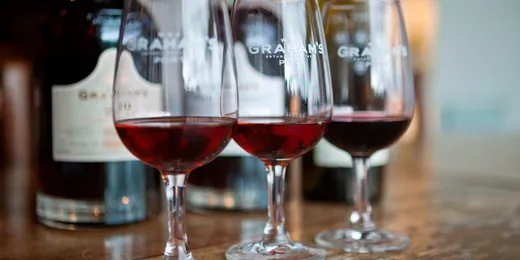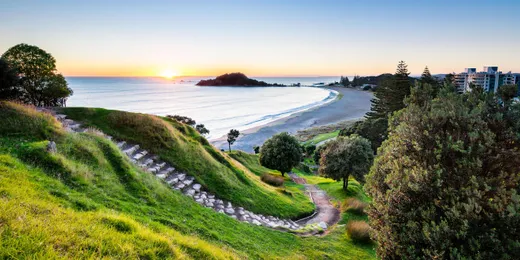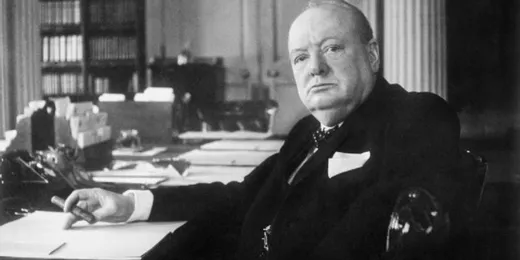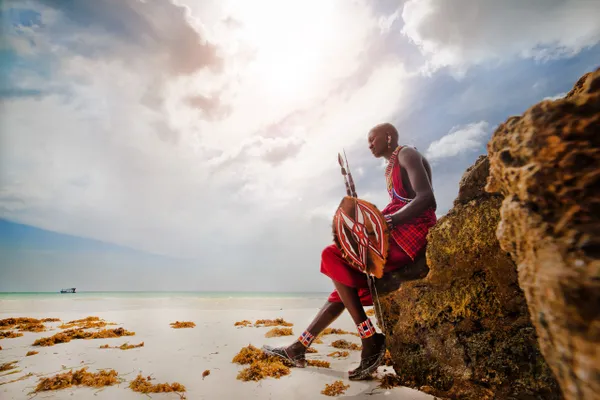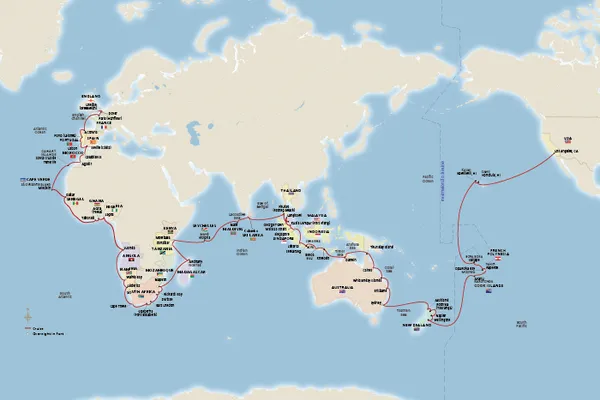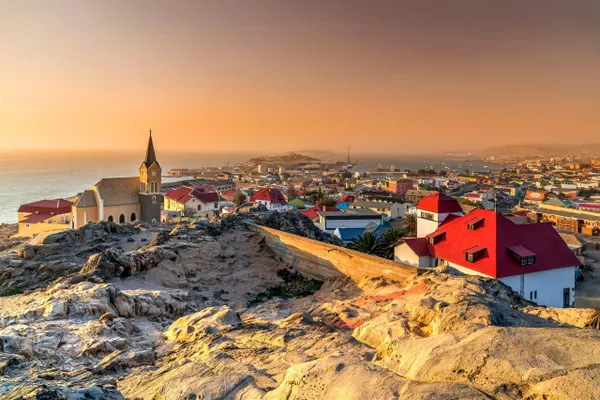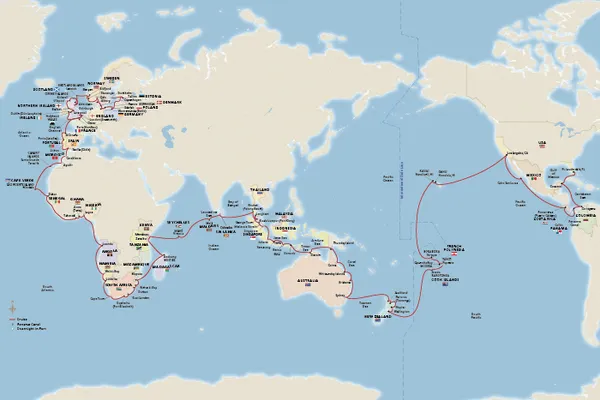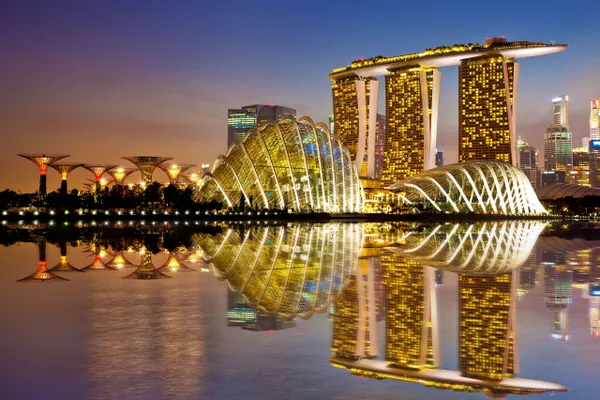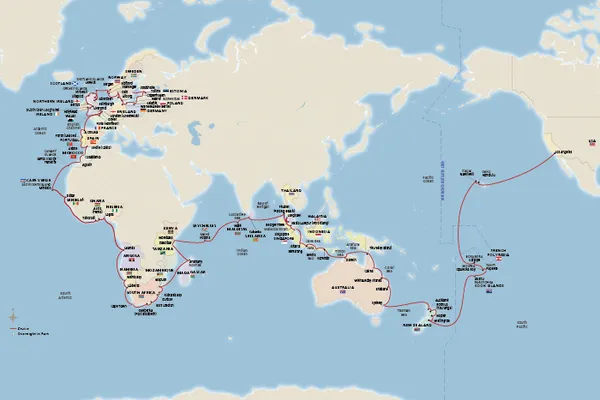
Embark on an epic world cruise
A world cruise offers the rare opportunity to unpack just once and travel in comfort as you explore dozens of destinations across the South Pacific, Australia, Southeast Asia, Africa, Europe and beyond. Read on to learn about the basics of wine tasting, discover how UNESCO World Heritage Sites earn their designations and uncover the remarkable flight patterns of seabirds.

World Cruises
With an equatorial radius of 3,963 mi. (6,378 km), Earth is the fifth largest planet in the solar system in terms of size and mass. Its surface is typically divided into seven continents: Africa, Antarctica, Asia, Australia, Europe, North America and South America. These landmasses are surrounded by five large bodies of water: the Arctic, Atlantic, Indian, Pacific and Southern oceans.
Looking at a map of the world, it is easy to imagine that all seven continents once fit neatly together like a puzzle. This theory, known as continental drift, was first posited in 1596 by Abraham Ortelius (1527–1598), the creator of the first modern atlas. It gained traction much later, in 1912, when geophysicist Alfred Wegener (1880–1930) suggested that all the land masses of the planet were once conjoined as one. He published this theory three years later in his important book The Origin of Continents and Oceans.
Wegener coined the term “Pangea” to refer to this massive supercontinent. He derived this appellation from ancient Greek (pan meaning “all” and Gaia meaning “Mother Earth”). Today, scientists believe that Pangea merged from even earlier landmasses some 300 million years ago and started to drift apart 200 million years ago. During its 100 million years of existence, Pangea resided mostly in the Southern Hemisphere.
If ancient Earth possessed one supercontinent, that meant that it was also home to one massive ocean. The term Panthalassa (thalassa meaning “sea”) describes this vast area, which covered about 70 percent of the planet. Experts believe that today’s Pacific Ocean is the closest “ocean relative” to Panthalassa.
Modern ocean currents have had a profound and lasting impact on world history, weather and marine ecosystems. North of the equator, currents generally flow in a clockwise direction; to the south, counterclockwise. Knowledge of currents was critical during the Age of Discovery, when finding favorable ones could quite literally mean the difference between sailing forward or backward. Even today, merchant ships rely on currents to save fuel and bring efficiency to their operations.
Weather, too, is affected by the flow of the oceans. The temperature of the breezes that blow inland is affected by the current over which they have blown. The Gulf Stream, for instance, carries warm water from the Gulf of Mexico to Northwest Europe, bringing with it an air mass that makes coastal Norway and its neighbors more temperate than other areas at the same latitude.
The Humboldt Current achieves the opposite effect: It surges northward from the southern tip of Chile, delivering colder waters and cooler breezes to Peru’s doorstep. The Humboldt illustrates another impact of currents: When they travel up or down from polar regions, they bring a rich abundance of plankton—a banquet for local fish—and foster some of the richest marine environments in the world.

-
Cuisine—Wine tasting basics
Wine is one of the world’s truly global commodities. There is evidence that wine grapes were cultivated in the Middle East at least as early as 4000 BC, and Egyptian sources dating from 2500 BCE mention winemaking. The ancient Greeks planted grapes in colonies from the Black Sea to Spain, and the Roman Empire took viticulture to Europe’s now-famous valleys of the Rhine, Moselle, Danube and Rhône rivers. During the Age of Exploration, winemaking was transported from the Old World to the New, with prime wine-growing regions cropping up in South America and South Africa. British settlers brought European vines to Australia and New Zealand in the early 19th century.
Although wine tasting can seem quite complex, it is ultimately a wonderfully straightforward experience. Here is a brief overview of what to look for and expect the next time you enjoy a glass of wine:
- How does it look?
Start by swirling a little wine around your glass and then take a good look at it. If it is white wine, the color will tell you how old the wine is. Most whites start off very pale and deepen in color as they age. The opposite is true of red wine, as the color generally becomes paler with age. - How does it smell?
The aroma of a wine can also provide you with meaningful information. To release the full bouquet, you need to swirl the wine around in the glass then stick your nose into the glass and take a good sniff. Aim to identify easily recognizable smells such as fruit, wood, flowers or smoke. Trust your nose—if you smell something offensive or off-putting, the wine will probably not taste very nice either. - How does it taste?
The next—and best—stage of the wine-tasting process is the actual tasting. This does not involve taking a big swallow; instead, take a little wine in your mouth and hold it there. This part of the process is especially useful when it comes to assessing the body, or depth, of the wine. “Body” may be loosely described as the taste that remains in your mouth once you have spat the wine out (or swallowed it). In basic terms, wines with a heavier body will stay with you longer. - Is the temperature right?
A cold temperature may disguise the aroma of a wine, whereas a temperature above 70°F (21.1°C) might cause the wine to give off an alcoholic smell due to the evaporation of ethanol. Red wines are best when served slightly below room temperature, somewhere between 53–69°F (11.7–20.6°C). White wines are best between 44–57°F. (6.7–13.9°C) Sparkling wines are best when chilled to 38–45°F (3.3–7.2°C). - Be sure to use the right glass.
The shape and size of your glass have a profound impact on the vapors that collect inside it, which deliver the aromatic compounds that affect taste. There are many different types from which to choose, but generally red wines require a larger bowl and wider opening. White wines fare better in smaller bowls with tighter openings that preserve their floral aromas.
- How does it look?
-
Culture—UNESCO World Heritage Sites
UNESCO (United Nations Educational, Scientific and Cultural Organization) seeks to encourage the identification, protection and preservation of the world’s cultural and natural heritage sites. The defining moment for this mission took place in 1960 when Egypt and Sudan appealed to UNESCO for help saving the Nubian temples on the banks of the Nile, soon to be flooded by the construction of the Aswan High Dam. Fifty countries made financial contributions to the campaign. That effort resulted in moving them out of harm’s way.
The World Heritage Convention drew its inspiration from the international synergy of this project, and over the years, the most significant and spectacular sites around the globe have been identified and inscribed on the World Heritage List in an effort to protect them for future generations. More than half a century later, there are over 1,000 UNESCO World Heritage Sites in over 150 countries—all of which have been recognized for their “outstanding universal value.” In addition, candidates must meet one other standard within their category.
To be selected as a Cultural Heritage Site, a place or piece of work must be viewed as a masterpiece of creative genius. That spark of genius—such as an innovative architectural or artistic style—might have emerged as a singular event in time, or it might have inspired a centuries-long movement. Alternately, its creation must embody a significant state in human history. On a larger scale, a historic human settlement whose elements represent an entire culture might also be in the running to become a UNESCO Site.
Among the candidates for Natural Heritage, exceptional beauty wins UNESCO’s attention. Or, an area might illustrate the major geologic stages of Earth’s history, such as the multi-hued strata of a canyon. Biological significance may also be a factor. For example, if a site were to profoundly exhibit the evolutionary process behind an ecosystem, it may be eligible.
-
Nature—The epic journeys of seabirds
The overwater migration of seabirds has been recorded since the days of ancient Greece. In modern times, ornithologists have been able to more accurately identify particular species and their routes. They have found that some seabirds travel thousands of miles over water between breeding and wintering sites, crossing the equator on long north-south routes. Others, like the albatross—the largest of seabirds—even circumnavigate the earth on a constant east-west flight. Remarkably, these majestic creatures seem to rely on some of the same “tools” used by ancient seafarers: celestial hints from the sun and stars, the magnetic pull of the earth and mental maps that incorporate physical landmarks.
Highly adapted to marine life, seabirds might spend many months flying over water. As such, they have evolved into highly efficient flyers, soaring between differing air masses to gain velocity or riding prevailing trade winds to gain distance with little effort. They survive their long migrations by feeding on krill or fish that linger on the ocean’s surface, foraging for food on the coast or diving up to 100 ft (30.5 m) below water to catch squid.
Cory’s shearwater (Calonectris borealis) breeds in the North Atlantic—near the Azores, Madeira and the Canary Islands—then migrates to the South Atlantic or to South American waters. The great shearwater (Ardenna gravis) breeds near the remote South Atlantic islands of Tristan da Cunha before migrating toward the eastern coast of North America. And, after breeding in the southern portion of South America, the black‑browed albatross (Thalassarche melanophris) flies thousands of miles toward Australia or the Benguela Current region, which lies off the coast of Namibia and western South Africa.
As impressive as these flight patterns are, few birds cover the mileage of the sooty shearwater (Ardenna grisea). This remarkable bird not only flies from the Arctic to Antarctica each year but also journeys from east to west in search of warm summer weather. In a single year, sooty shearwaters may travel up to 40,000 mi. (64,374 km)—starting from New Zealand or Chile, before moving across the Pacific to California, Alaska or Japan.
World Cruises Highlights
During a culturally immersive world cruise, you can uncover captivating art and architecture, sample regional delicacies and discover many of the most breathtaking parts of the globe. Here are some of the varied experiences you can have on just one itinerary:
- Experience the cultural diversity of up to six continents
- Traverse the legendary Panama Canal
- Explore the lush rainforests of Costa Rica
- Delve into World War II history at Pearl Harbor in Honolulu
- See French Polynesian marine life by snorkel, scuba or kayak
- Watch the traditional dances of the Māori in New Zealand
- Visit the UNESCO-listed Sydney Opera House
- Encounter a Komodo dragon, the largest lizard on Earth
- Observe orangutans at a renowned Malaysian sanctuary
- Learn to prepare traditional Swahili cuisine in Kenya
- Set out on a South African safari in search of big game
- Hike through the picturesque Scottish Highlands
- Discover the charming medieval city of Óbidos in Portugal
- Enjoy a behind-the-scenes tour at the Munch Museum in Oslo
Destination Insight Videos
-
An Unforgettable Viking World Cruise: Epic Destinations (2:18)
Discover the convenience of unpacking once to explore iconic cities, charming small towns and stunning natural wonders on a Viking World Cruise. Guests share highlights of their extended journey around the globe, including remarkable experiences in Africa.
-
Uncover the renowned Sydney neighborhood of The Rocks (22:44)
Journey through the vibrant heart of Sydney and delve into the captivating history and rich culture of the neighborhood known as The Rocks. Your At Home episode hosts—Nathalie Fagan, Viking’s Commercial Manager, and Gregg Peek of Dave’s Travel Group—will guide you through bustling open-air markets brimming with delectable street food and reveal hidden laneways steeped in centuries of heritage. Admire picturesque views of the iconic Sydney Harbour Bridge as you enjoy learning more about this historic district you can visit on an ocean voyage with us.
-
History of Port Wines (3:58)
Take a journey with Karine as she explores Portugal’s history of wine and gains insight into its production and the various types of port, with a local expert on hand.
-
Explore New Zealand's Bay of Plenty with local guide Graeme Crossman (52:50)
Gain an insider’s perspective on daily life in New Zealand’s Bay of Plenty in this episode of our At Home series. Follow along as our knowledgeable guide, Graeme Crossman, explores the port of Rotorua. He then shows us the stunning natural beauty of Matakana Island and offers insights into indigenous Māori culture. Enjoy hearing the highlights of this spectacular region that awaits your discovery on our 15-day Australia & New Zealand voyage.
-
Churchill’s Britain (3:01)
Discover the remarkable life and times of revered British statesman Sir Winston Churchill. During this 5-night London extension with Viking, gain Privileged Access to Cabinet War Rooms; visit Churchill’s private Chartwell estate and his birthplace at Blenheim Palace; learn how the British broke the Nazis’ secret code at Bletchley Park and much more.
-
Alastair Miller in conversation with Dilhan and Malik Fernando of Dilmah Tea (17:30)
Alastair Miller is joined by Dilhan and Malik Fernando, the sons of Dilmah Tea founder Merrill J. Fernando, for an insightful interview about the brand’s mission to bring fresh, ethically produced Sri Lankan tea to the world. Learn more about Dilmah’s business philosophy and why the brand’s loose-leaf teas are served on board Viking’s fleet. Later, during a tour of the Dilmah Tea Plantation and Factory, discover the traditional process of hand-picking, grading and producing premium teas and uncover the delicate art of cultivating pure cinnamon.
World Cruises Travel FAQ
All-Inclusive Itineraries—World Cruises
Choose one of our enriching, all-inclusive voyages and discover the many benefits of exploring in Viking comfort.




